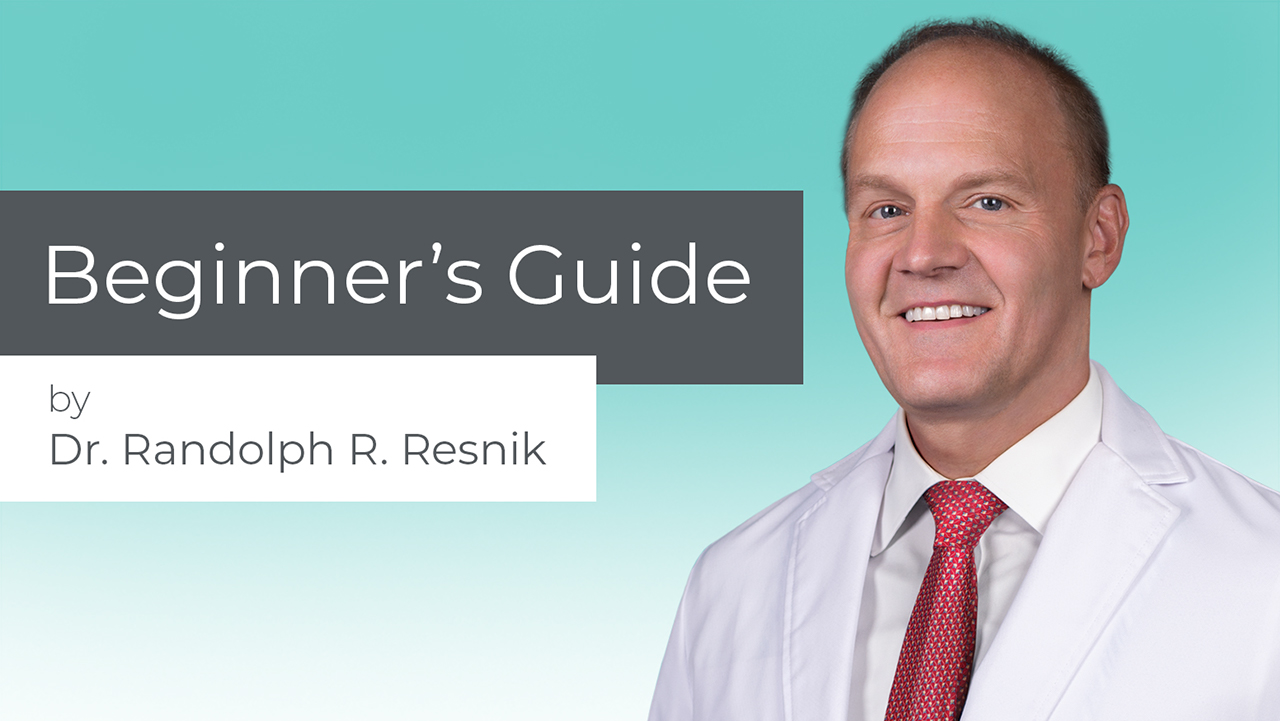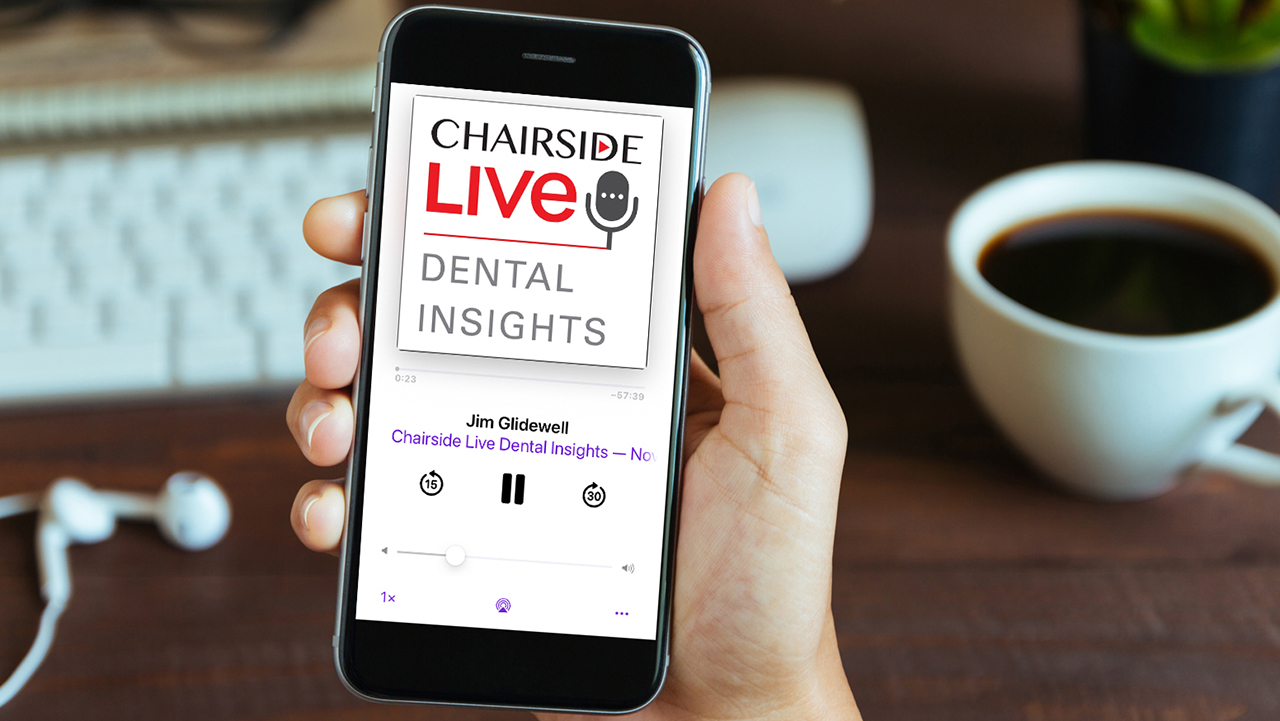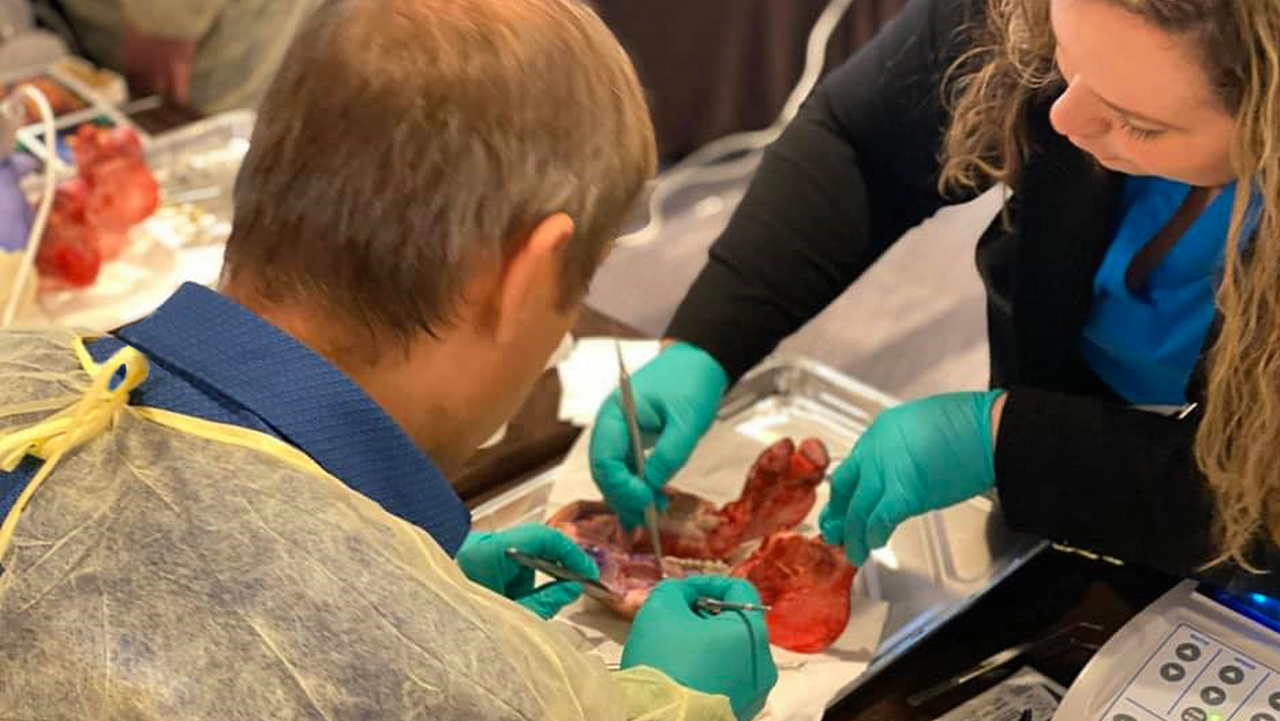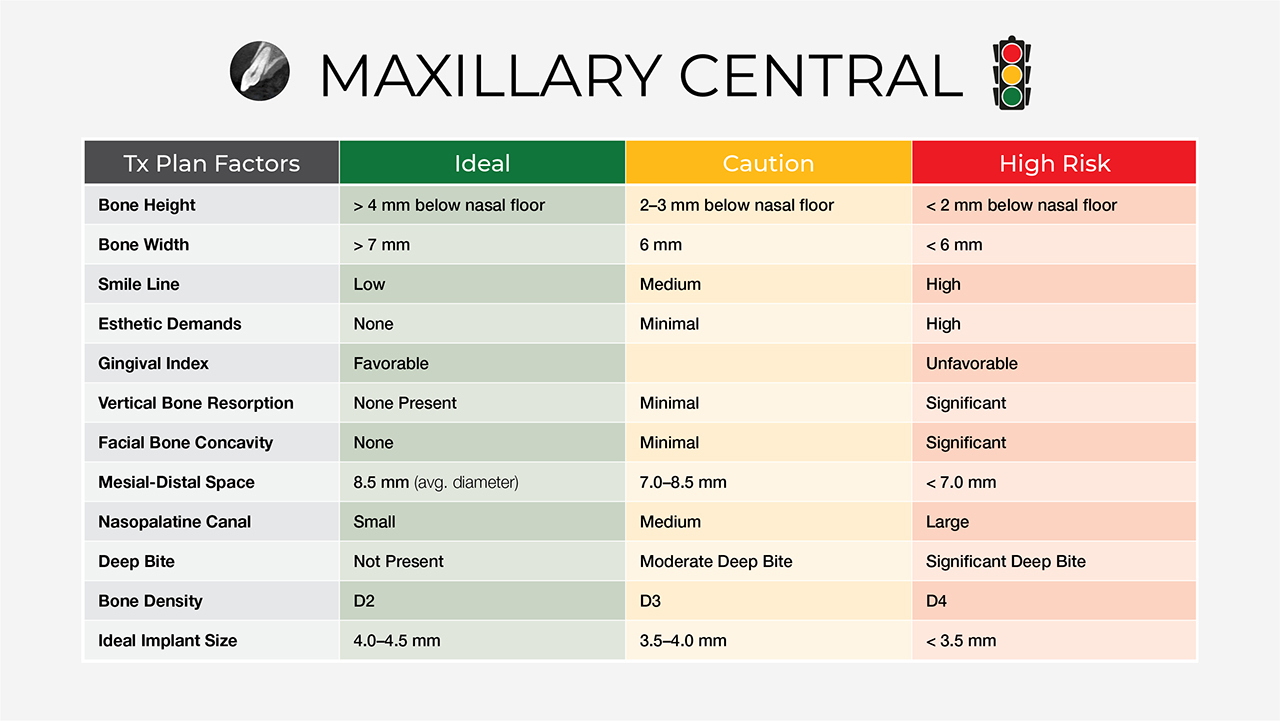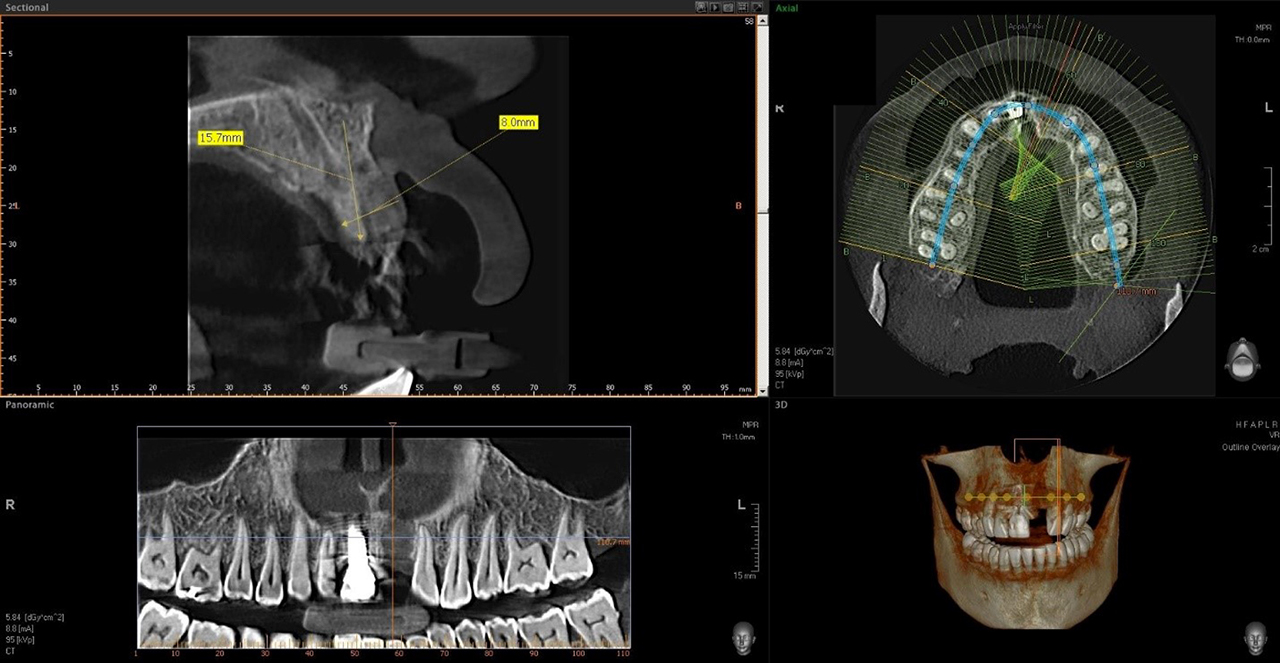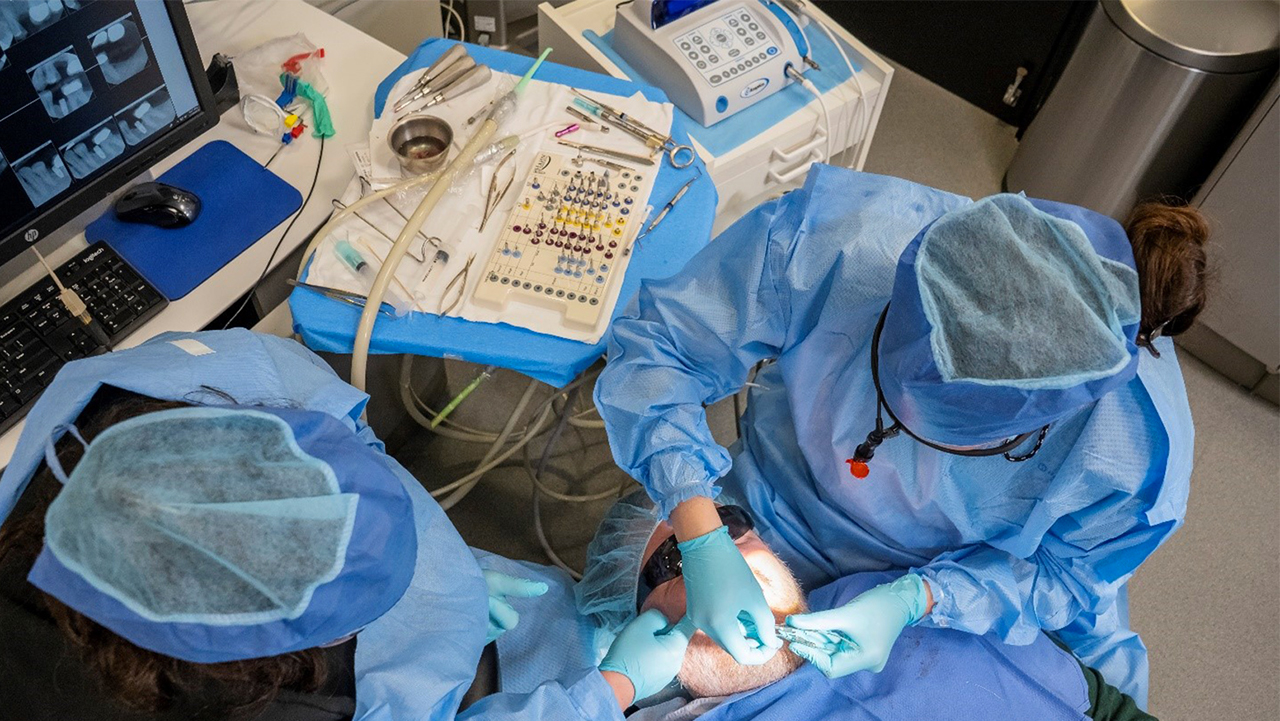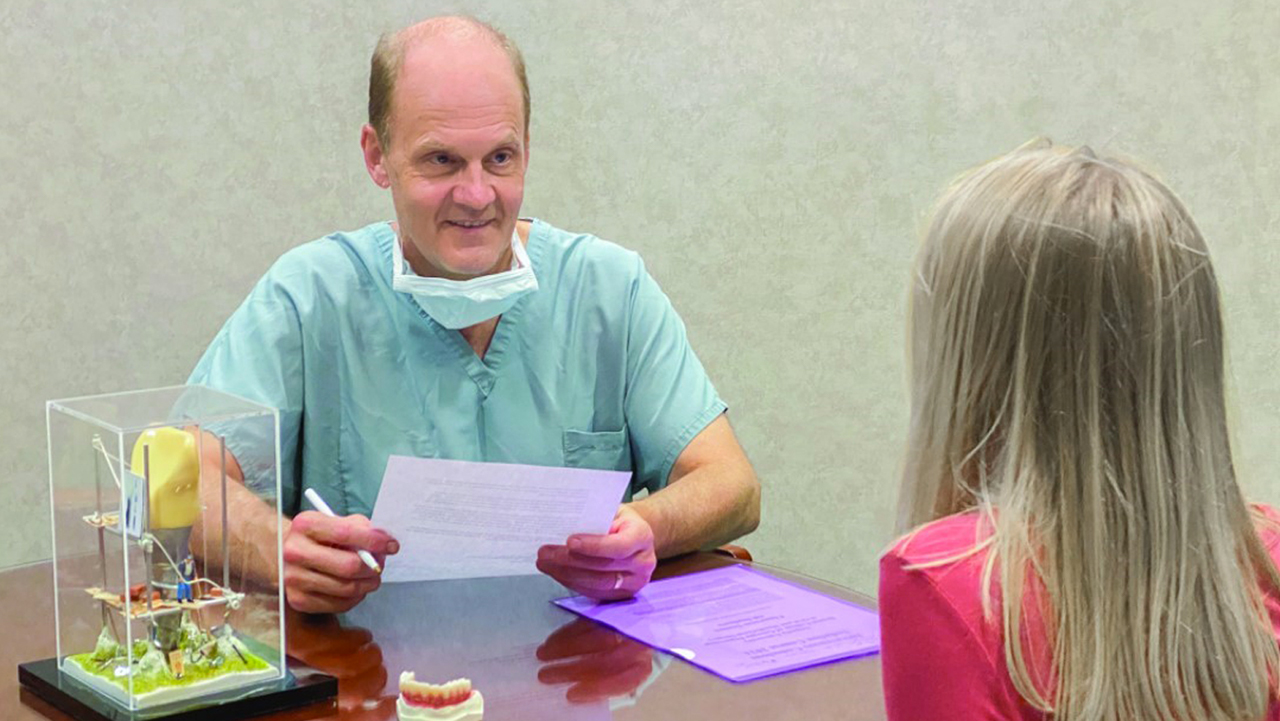Mandibular Posterior Molars: Even though this area may appear to be an easy place to insert an implant, the clinician should always be concerned about the location of the mandibular nerve. In addition, this area may be highly susceptible to lingual perforations from sublingual undercuts. Lastly, access may be difficult because of the posterior location.
Maxillary Anterior: This area is usually compromised in bone quantity, as the buccal plate is the thinnest here, even in healthy patients. Ideal positioning is very difficult to obtain, especially since the trajectory often makes implant positioning more buccal.
Maxillary Posterior: The maxillary posterior area is historically associated with the weakest and poorest bone density. In addition, placement is often complicated by the location of the maxillary sinus, making surgical access difficult at times.
Immediate Implants: Extraction and immediate placement of implants may be very difficult in some cases. Immediate implants require an additional skill set, and treatment planning is more complicated. In my textbook “Contemporary Implant Dentistry, 4th Edition,” I have developed a difficulty scale for each specific tooth, dictated by various factors.


